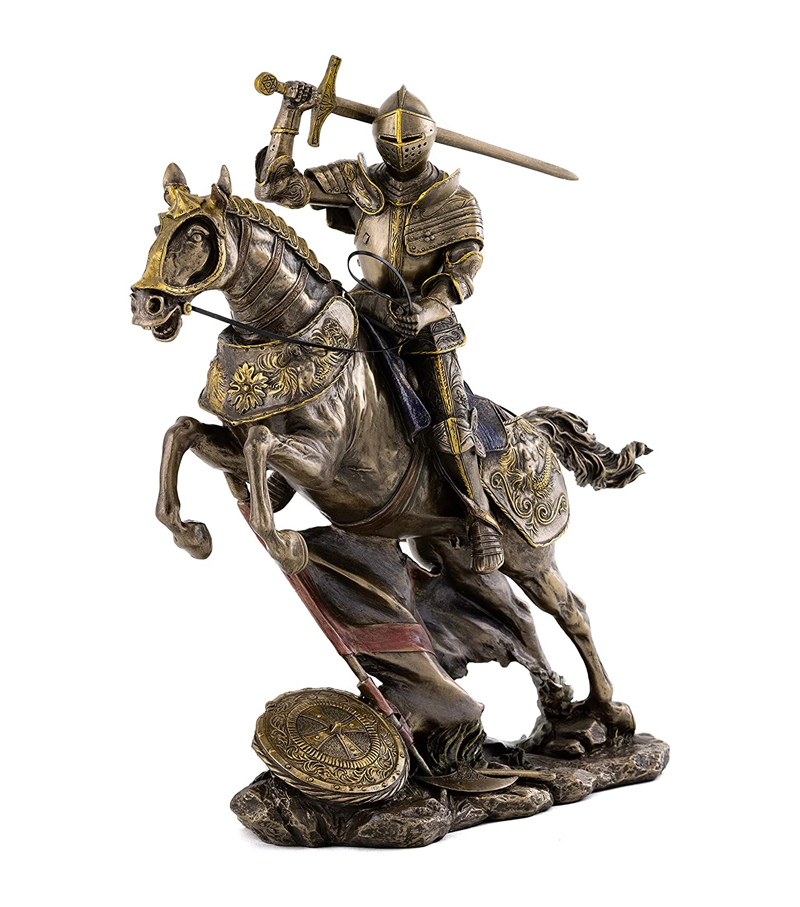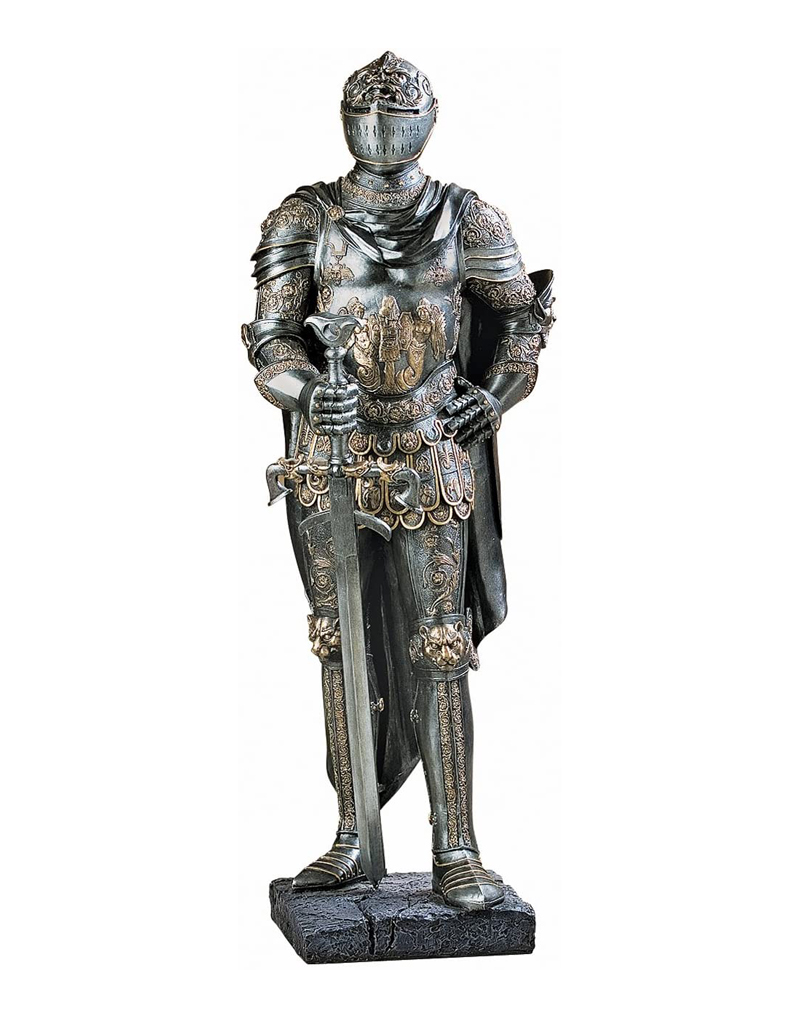Medieval Knight “in Armour on Armored Horse” Statue
This Armored Medieval Knight Statue have an exquisite craftsmanship, realized with premium sculpted cold cast bronze, real bronze powder mixed with resin. Hand-painted in bronze finish to give a high-quality antique look without sacrificing the details. Great addition to any Medieval collection. Knights were the most-feared and best-protected warriors on the medieval battlefield. They were also the most fashionably dressed and best-mannered members of society. Medieval Armour is an historical type of personal body armour made from bronze, iron, or steel plates, culminating in the iconic suit of armour entirely encasing the wearer. Full medieval steel armour developed in Europe during the Late Middle Ages, especially in the context of the Hundred Years’ War, from the coat of plates worn over mail suits during the 14th century. In Europe, armour reached its peak in the late 15th and early 16th centuries. The full suit of armour, also referred to as a panoply, is thus a feature of the very end of the Middle Ages and the Renaissance period. Its popular association with the “medieval knight” is due to the specialised jousting armour which developed in the 16th century. Full suits of Gothic Armour were worn on the battlefields of the Burgundian and Italian Wars.
The most heavily armoured troops of the period were heavy cavalry, such as the gendarmes and early cuirassiers, but the infantry troops of the Swiss Mercenaries and the Landsknechts also took to wearing lighter suits of “three quarters” munition armour, leaving the lower legs unprotected. The use of armour declined in the 17th century, but it remained common both among the nobility and for the cuirassiers throughout the European wars of religion. After 1650, armour was mostly reduced to the simple breastplate (cuirass) worn by cuirassiers. This was due to the development of the flintlock musket, which could penetrate armour at a considerable distance. For infantry, the breastplate gained renewed importance with the development of shrapnel in the late Napoleonic wars. The use of steel plates sewn into flak jackets dates to World War II, replaced by more modern materials such as fibre-reinforced plastic since the 1950s. Partial medieval armour, made out of bronze, which protected the chest and the lower limbs, was used by the ancient Greeks, as early as the late Bronze Age. The Dendra Panoply protected the entire torso on both sides and included shoulder and neck protections. Less restrictive and heavy armor would become more widespread in the form of the muscle cuirass during classic antiquity before being superseded by other types of armor.
Parthian and Sassanian heavy cavalry known as Clibanarii used cuirasses made out of scales or mail and small, overlapping plates in the manner of the manica for the protection of arms and legs. Armor in the form of the Lorica Segmentata was used by the Roman Empire between the 1st century BC and 4th century AD. Single plates of metal armour were again used from the late 13th century on, to protect joints and shins, and these were worn over a mail hauberk. Gradually the number of plate components of medieval armour increased, protecting further areas of the body, and in barding those of a cavalryman’s horse. Armourers developed skills in articulating the lames or individual plates for parts of the body that needed to be flexible, and in fitting armour to the individual wearer like a tailor. The cost of a full suit of high quality fitted armour, as opposed to the cheaper munition armour (equivalent of ready-to-wear) was enormous, and inevitably restricted to the wealthy who were seriously committed to either soldiering or jousting. The rest of an army wore inconsistent mixtures of pieces, with mail still playing an important part. Medieval Knight “in Armour on Armored Horse” Statue sizes: 10 inches / 25.5 cm x 3.5 inches / 9 cm x 10.25 inches / 26 cm.
Armored Medieval Knight Statue on Amazon.
Armored Medieval Knight Statue on eBay.
Animals Statues, Horses Statues and Medieval Statues.





You must be logged in to post a comment.